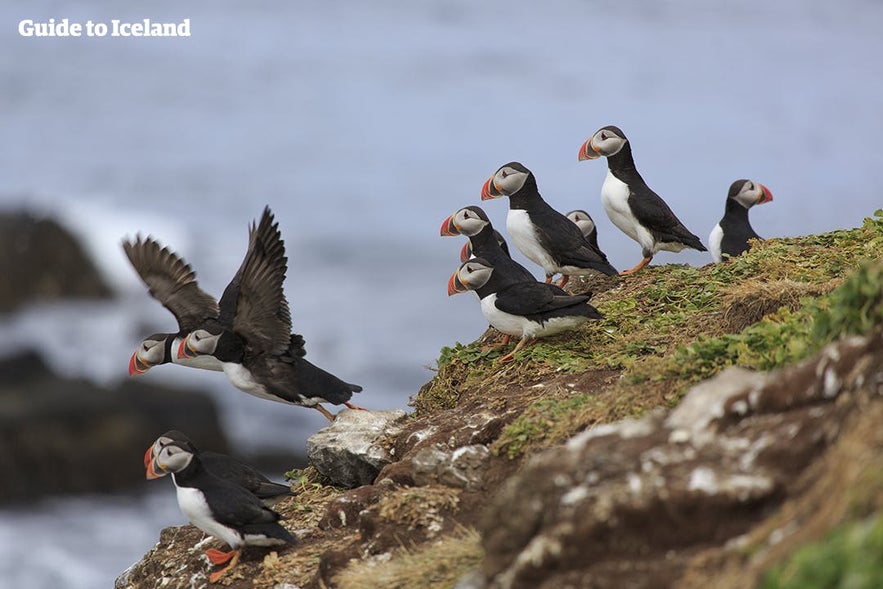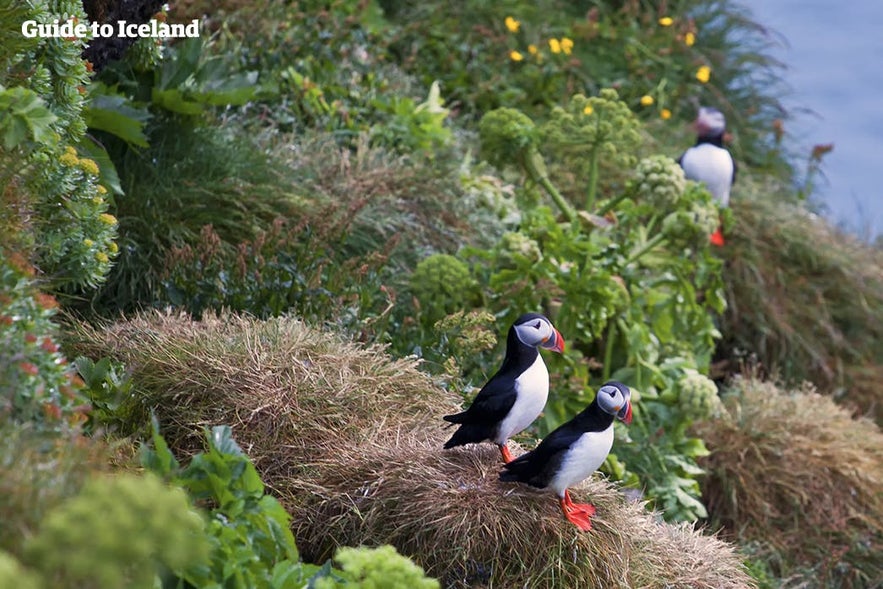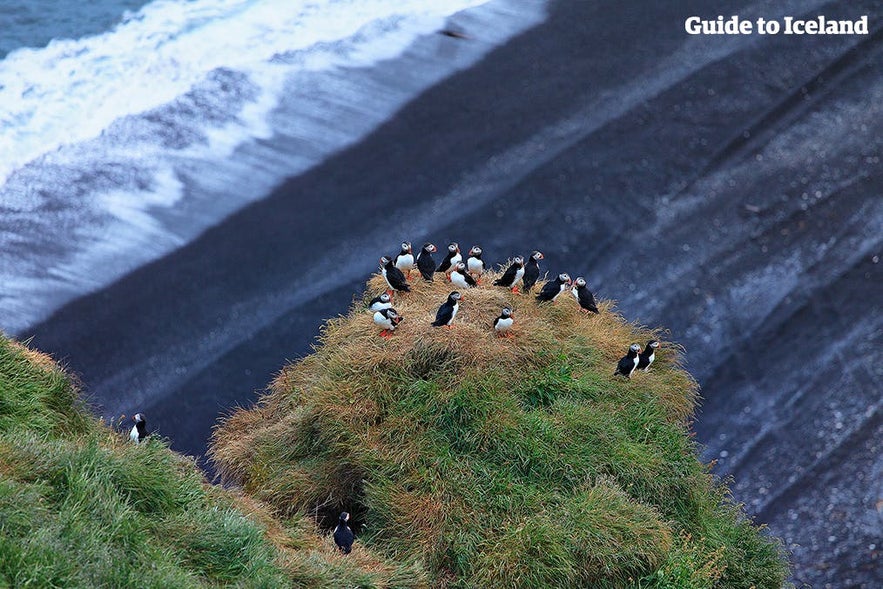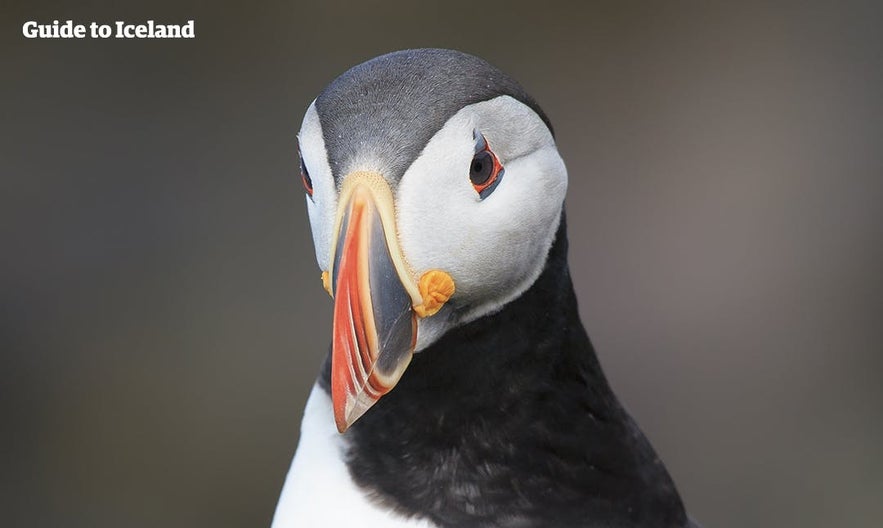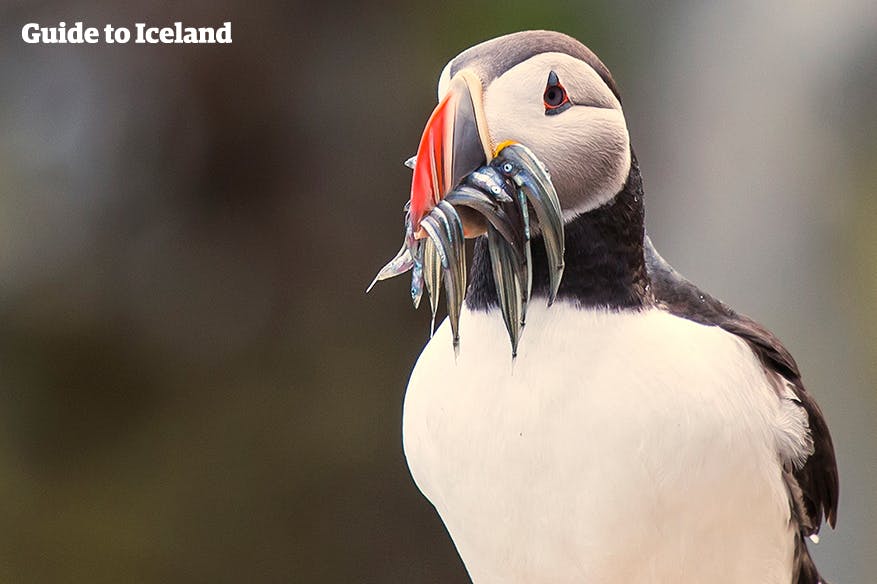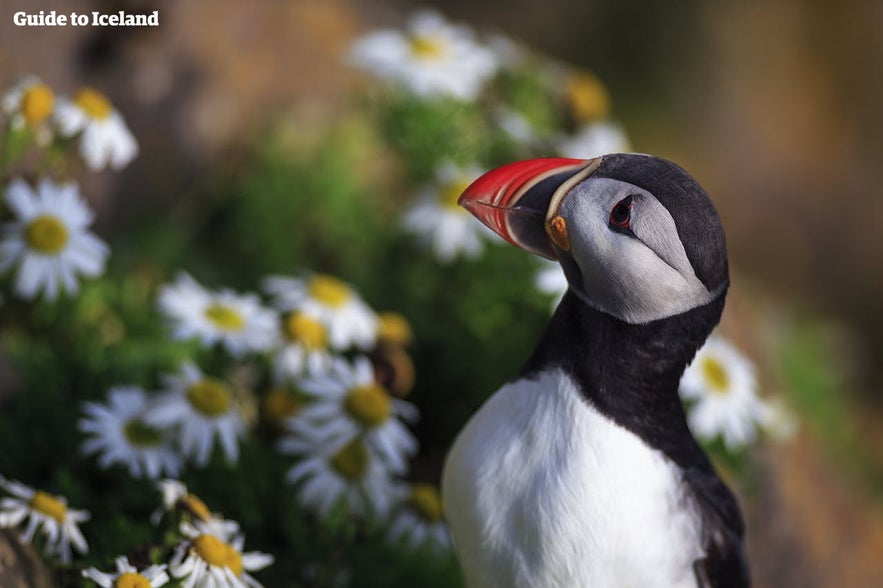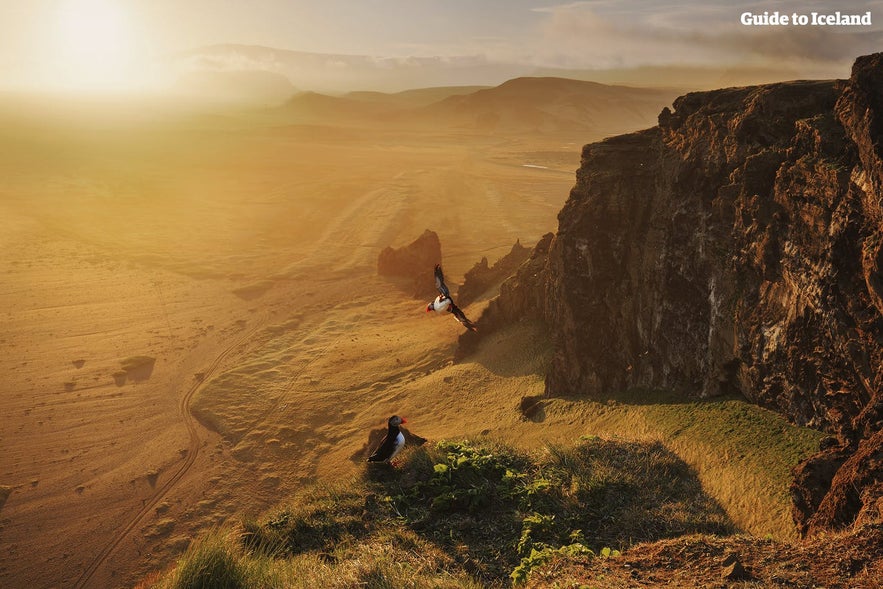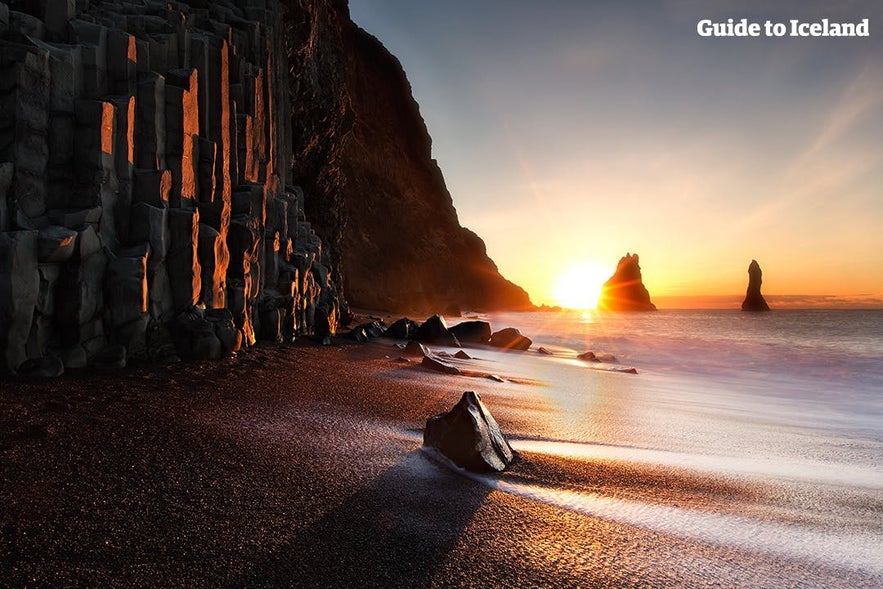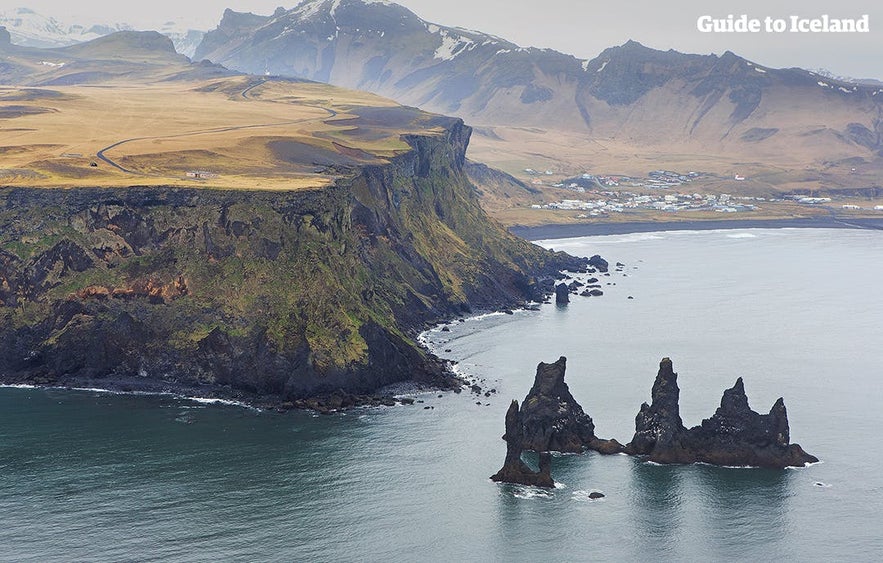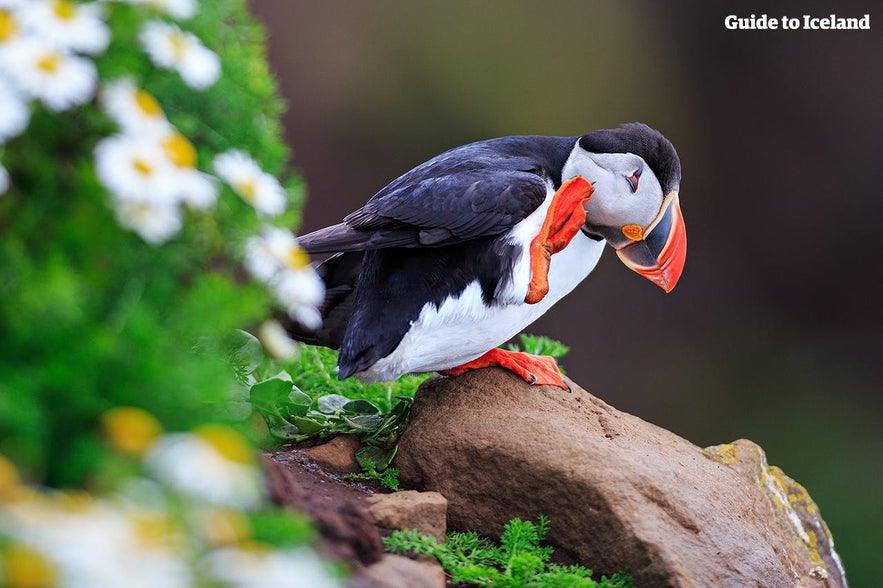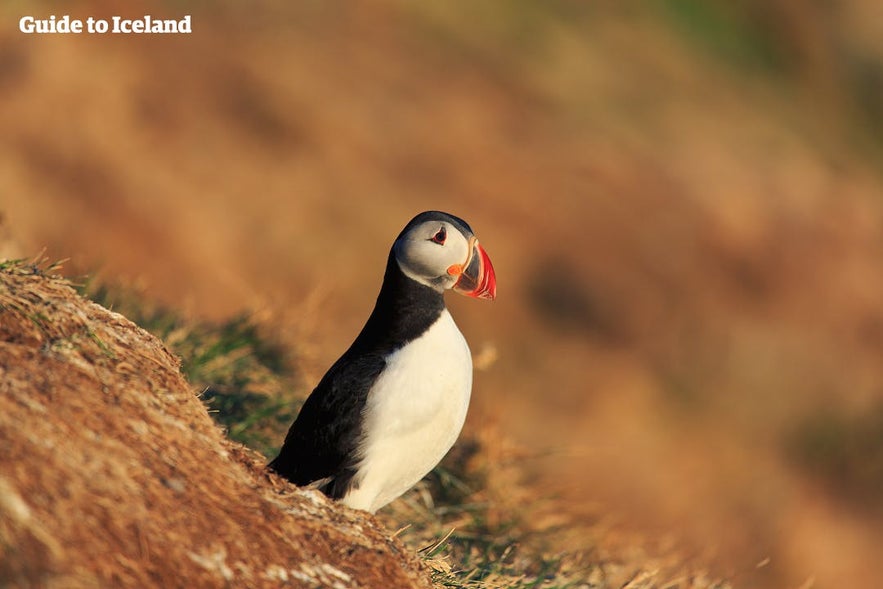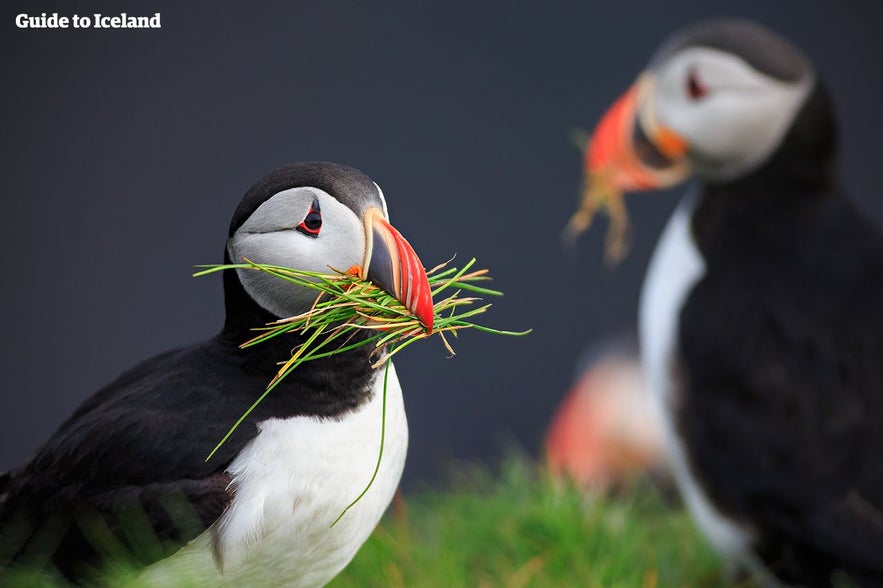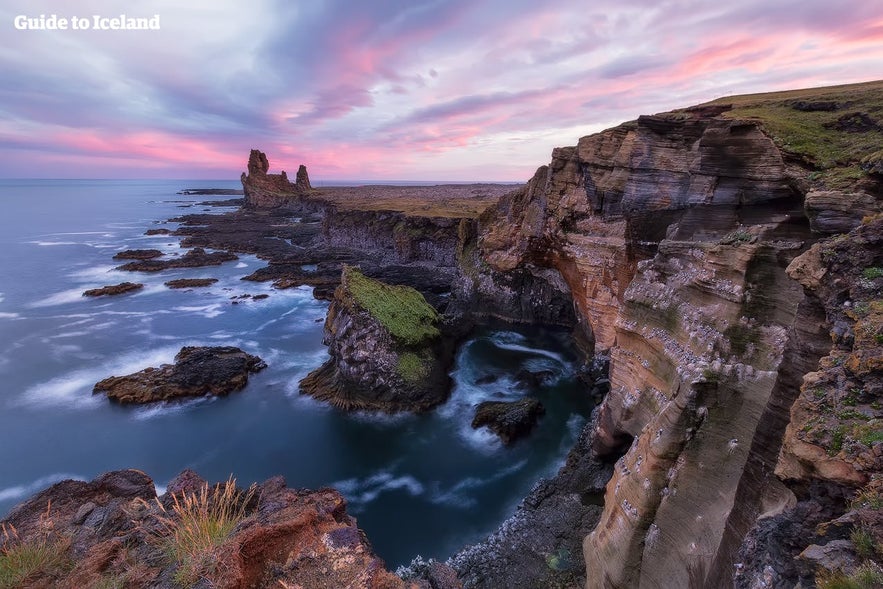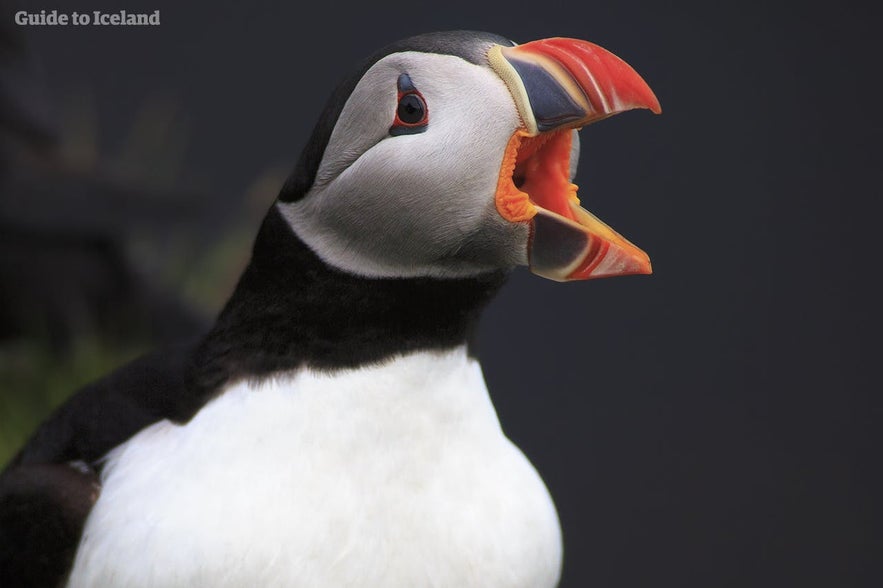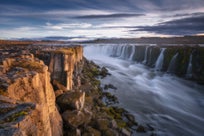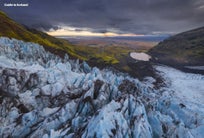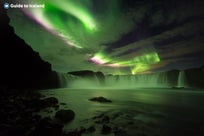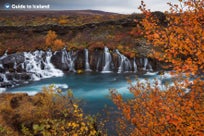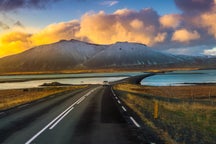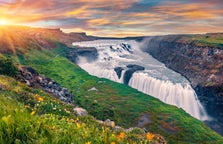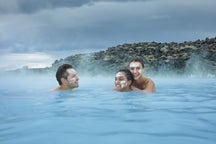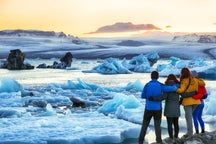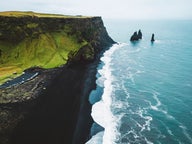
Where to See Puffins in Iceland

- Responsible Puffin Watching in Iceland
- Where is the Best Place to See Puffins from Land?
- Puffin Watching at Latrabjarg
- Puffin Watching at Dyrholaey
- Puffin Watching at the Tjornes Peninsula
- Puffin Watching at Ingolfshofdi
- Puffin Watching on the Westman Islands
- Where is the Best Place to See Puffins by Boat?
- Puffin Watching from Reykjavik
- Puffin Watching from North Iceland
- Puffin Watching from the Snaefellsnes Peninsula
- Puffin Watching from Heimaey
- Puffin Watching on Papey Island
- Puffin Watching on Grimsey Island
Where is the best place to see puffins in Iceland? Can you find puffins throughout the year? Are there any tours particularly tailored to puffin watching? How close will they let you get? Discover all you need to know about Iceland's most adorable animal.
It is little wonder why so many coming to Iceland seek out the nation's puffin population. These beautiful little birds, with their brightly colored bills, emotive watery eyes, and clumsy, wobbling walk, are intrinsically likable creatures, and they are very easy to attribute with human traits. After all, they nest in lifelong pairs, nurture their chicks as a couple, and have clear social bonds within the colony.
There are many ways in which you can enjoy the puffins up close. There are certain places along the coast where they nest in vast numbers, which you can rent a car or take one of our fantastic self-drive tours to drive to and approach yourself, or get to see on a number of great puffin tours.
The puffin colonies in themselves are also part of the appeal of these charming birds, as they can number in the tens of thousands. This makes puffins quite as awe-inspiring collectively as they are adorable individually.
- Learn all you need to know about Wildlife and Animals in Iceland
- Discover the magical world of Birds in Iceland
Iceland is home to sixty percent of the world's Atlantic Puffin population: over six million individuals. The fact that they nest in the same places they were born and only nest when there are other puffins around means that certain places in Iceland are undoubtedly the best in the world for this special kind of birdwatching.
They cannot be seen all year, however. Puffins roost on the surface of the ocean and only come on land in order to breed, lay their eggs, incubate them, and raise their chicks until they fledge. This occurs throughout the summer; therefore, the puffin-watching season in Iceland lasts from June to September.
Responsible Puffin Watching in Iceland
When they are nesting, puffins are often very easy to see and approach; in spite of being hunted and having their eggs raided in Iceland for a millennium, they have very little fear of people, and it is easy to get within a meter of them in some places. This is an incredible opportunity to connect with nature, but, of course, needs to be done so with respect to the animal.
If puffin watching, therefore, heed the following guidelines to ensure the experience is as pleasant for you as it is botherless for the bird in question.
- Always approach quietly and slowly
- If approaching on a cliff, do not get right to the edge; puffins dig burrows into cliffs, so you could inadvertently step on a weak piece of earth and crush their nest (of course, this poses a danger to people too, considering some of Iceland's cliffs are hundreds of meters tall)
- Never try to touch a puffin unless it is very clearly lost and in need of rescue
- If watching from a boat, keep a respectful distance, especially if your vessel has a loud engine
- Do not try to feed the puffins; they are more than capable of hunting for their own food
Protecting the puffins you are watching is not only important because they are cute but also because it's the decent thing to do. Puffins are "Threatened," according to the International Union for the Conservation of Nature (IUCN); their populations are in decline across their range, including in Iceland, so ensuring that you do not hinder their protection will help in their recovery efforts.
Furthermore, if you disturb one puffin, you may actually unsettle the whole colony. Puffins are sociable when on land and look to each other to determine the safety of their environment. If one takes off in a panic, all the others may follow suit; they tend to flock together and fly in a tight circle above where they are nesting to intimidate and protect from potential predation.
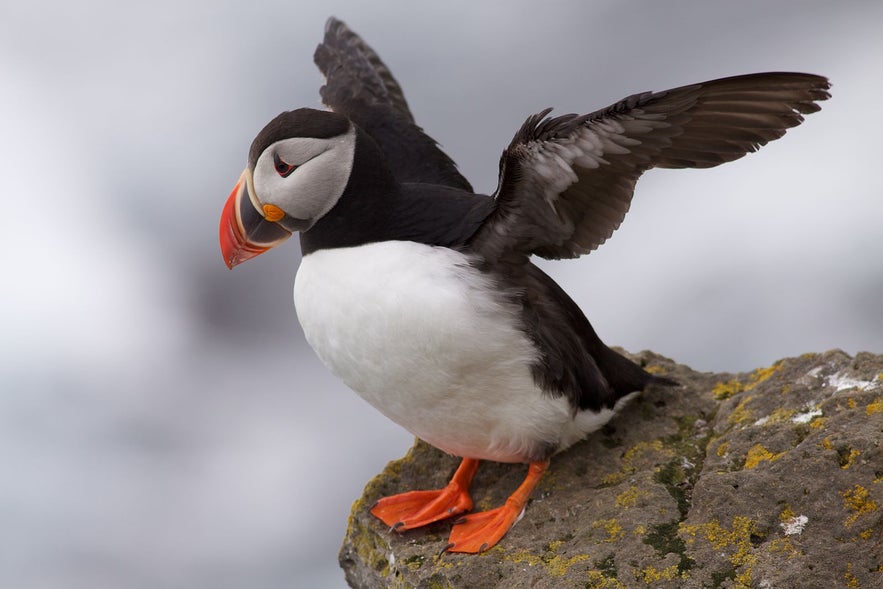 Photo from Wikimedia, Creative Commons, by Boaworm. No edits made.
Photo from Wikimedia, Creative Commons, by Boaworm. No edits made.
You do not, therefore, want to be responsible for emptying the cliffs at a popular bird-watching destination just because you thought a puffin wanted to be stroked.
If you wish to take a step further to protect the puffins while in Iceland, you could avoid purchasing their meat. Although they are hunted responsibly, and eating puffin is not considered taboo here, there is a strong push from many in Iceland to ban the practice, at least until the population comes back into recovery.
Where is the Best Place to See Puffins from Land?
As they nest along the cliffs of Iceland's craggy coastline, there are many places around the country where you can reliably find puffin colonies throughout summer. In many of these, you can follow a trail to reach them without having to book a boat tour.
Due to the cautious nature of these birds when choosing a place to nest, however, you are unlikely to find any in a location that is not known for its puffins. In spite of this, however, you may have a bizarre stroke of luck and find a puffin or a puffling somewhere you would never think
Tour guides Paulina Pierzak and Ármann Ægisson, for example, found a puffling at midnight in downtown Reykjavik, likely confused by the lights and as bewildered as to see them as they were lit. After a night of regaining strength in a cardboard box with some water and crackers, little Puffer was released back into the wild.
Horticulturalist James McDaniel, who works in Selfoss, a town over five kilometers from the ocean, found a lost puffin hiding between two greenhouses. Again, after a little nursing, it could be released back into the wild.
These cases, of course, were particularly exceptional. For your best chance at seeing puffins without getting on a boat, you are much better checking out one of the five places listed below.
Puffin Watching at Latrabjarg
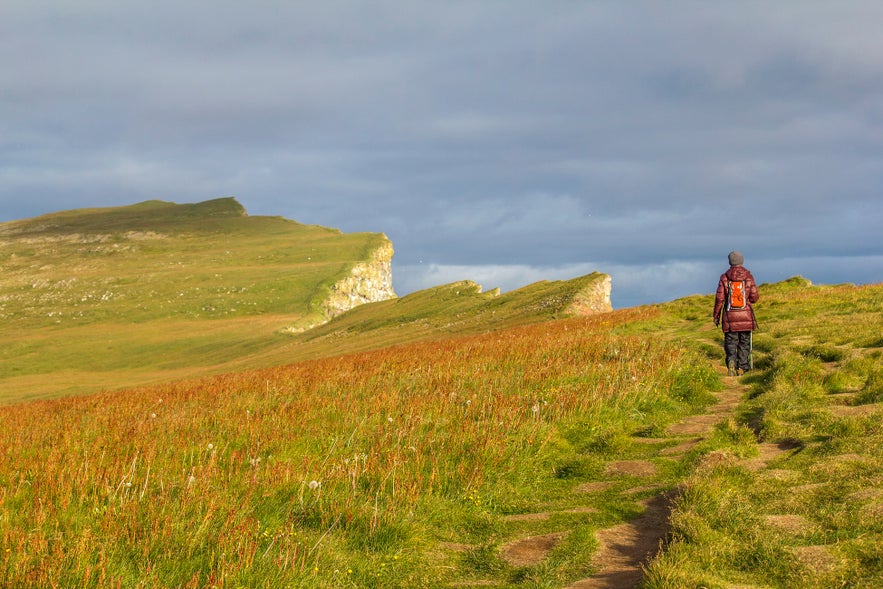 Photo by Michael Blum
Photo by Michael Blum
The Latrabjarg birdwatching cliffs are the most westerly point of Iceland; considering Iceland is the most westerly European country, they are often also considered to be the most western point of the whole continent (in spite of the fact that they are actually on the North American tectonic plate). At fourteen kilometers long and over four hundred meters high, they are one of the most popular attractions in the Westfjords.
While certainly an impressive sight during winter, it is throughout the summer that these cliffs truly come alive. Puffins are just one of the dozens of species of birds that come here to nest; you will also find guillemots, northern gannets, auks, and forty percent of the world's razorbills. There are literally millions and millions of individuals who collectively turn Latrabjarg into a breathtaking natural wonder.
Many trails will take you close to the cliff edge, where you can easily admire the many animals, be they nesting or swooping out to sea. With caution, you can approach more closely, being sure to stay approximately a meter from the edge so that you don’t accidentally cave in a hidden puffin burrow. A friendly local guide will make sure you get the best experience in a scenic 7-hour puffin & bird watching tour.
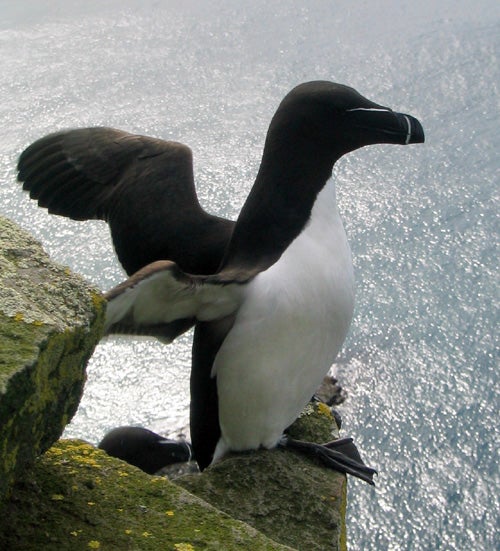
In most places, there will be markers showing you the closest you can get, so for the safety of everyone involved, follow their guidance.
Latrabjarg is renowned for its dramatic scale and unmatched bird-watching but is also a place of Icelandic culture, tradition, and history. You may see some individuals abseiling down the cliff faces on ropes, foraging for eggs and feathers; there is a long tradition of this in Iceland, dating back centuries, which continues today under regulation.
Because of this skill, Icelanders developed an incredible rescue that was possible when the British trawler Dhoon crashed at the bottom of Latrabjarg. Local farmers were able to use the ropes to scale down the cliff, saving the twelve surviving members of the accident.
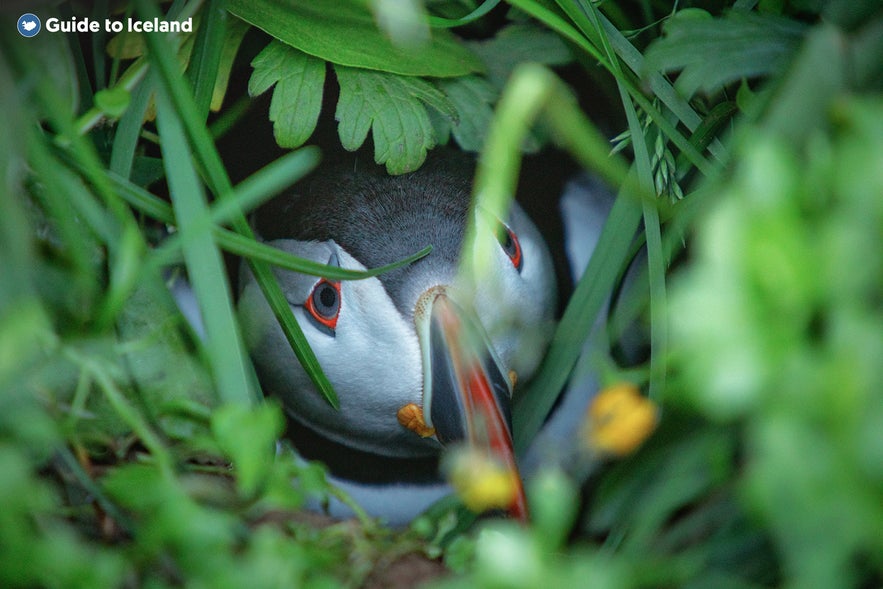
Those who continue to harness this skill should, according to folklore in the area, be cautious, however. It is said that a troll who lived in the cliffs was renowned for cutting their ropes and, though forced by a bishop into a cave without any birds nesting around it, is still alive and hidden within Latrabjarg.
Coming to these cliffs just for the bird-watching is well worth the trip, but thankfully, many other wonders of the Westfjords are close by for when you've had your fill. Raudasandur is a nearby beach renowned for its unusual pinkish sands, an anomaly in Iceland. Dynjandi is just a little further away and, without a doubt, one of Iceland's most awe-inspiring waterfalls.
- See also: Regína’s blog on Látrabjarg
Puffin Watching at Dyrholaey
While the Latrabjarg birdwatching cliffs are well worth a visit, to reach them is a seven-hour drive from Reykjavik, making it quite a schlep for those staying in the capital. Luckily, however, there are puffin colonies just a few hours away along the South Coast, the closest being at Dyrholaey Rock Arch.
Driving Route 1 South, you cannot miss this enormous landmark. Curving out from a row of cliffs into the tumultuous ocean, Dyrholaey is a fascinating example of Iceland's dramatic landscapes, shaped over millennia by fire and water. Up close, you will also see that it has unusual hexagonal basalt columns, rare formations that can only be found in a few places around the world.
It is possible to approach the arch both from the beach and from atop the cliffs, and both directions will reveal to you the vast puffin colony that nests here throughout summer. There are fewer other species of bird than at Latrabjarg (although eider ducks are also numerous), but the puffins still number in the thousands.
Standing atop Dyrholaey, however, means that the landscapes around you may even steal your attention from the birds you came to see. To both the east and the west, you can see the South Coast stretching far in both directions; to the east, the views are particularly great as they go across the notorious black-sand beach of Reynisfjara to the Reynisdrangar sea stacks. In clear weather to the north, you will be able to see Myrdalsjokull glacier, which covers Katla volcano.
Reaching Dyrholaey from Reykjavik is a journey of fewer than three hours, but considering the number of features en route will likely take much longer. You will drive through the geothermal town of Hveragerdi, where you can hike to and bathe in natural hot springs and pass by two of the country's favorite waterfalls, Seljalandsfoss and Skogafoss.
Dyrholaey is a great stop if you are heading to the sites of the southeast, such as Skaftafell Nature Reserve and the Jokulsarlon glacier lagoon.
Puffin Watching at the Tjornes Peninsula
The Tjornes Peninsula is a small, remote peninsula in North Iceland famous for two things: the fossils that can be found on its west coast and the birdlife on its east. While the former draws visitors throughout the year, and its other popular resident bird species, the rock ptarmigan, does not migrate, the area truly comes alive with the arrival of the puffins.
Several bird-watching trails will take you to see the puffins; one leads to its outermost tip, called Voladalstorfa, while another runs along the cliffs by Skeidsoxl. Both of these will grant you fantastic views of the colony. While admiring them, you can keep an eye out for the elusive ptarmigans, great cormorants, and black guillemots.
A great advantage of birdwatching from Tjornes is the fact that, when looking out to the ocean, you have a good chance of spotting whales and dolphins. It sits right beside the town of Husavik and Skjalfandi Bay, the whale-watching epicenter of Iceland and arguably all of Europe.
- See also: Whale Watching in Iceland
The peninsula is also in a convenient location near other awe-inspiring sites of the North. It is, for example, just an hour's drive from Lake Myvatn, an area renowned for its diverse array of geological and geothermal wonders. The "Capital of the North," the cultural town of Akureyri, is just an hour and a half away.
Avid birdwatchers seeking more than just puffins should head just a few minutes southeast of the peninsula to Vikingavatn, the Viking Lake. The wetlands here are home to thousands of freshwater birds, allowing you to admire all kinds of duck species and nesting horned grebes.
Puffin Watching at Ingolfshofdi
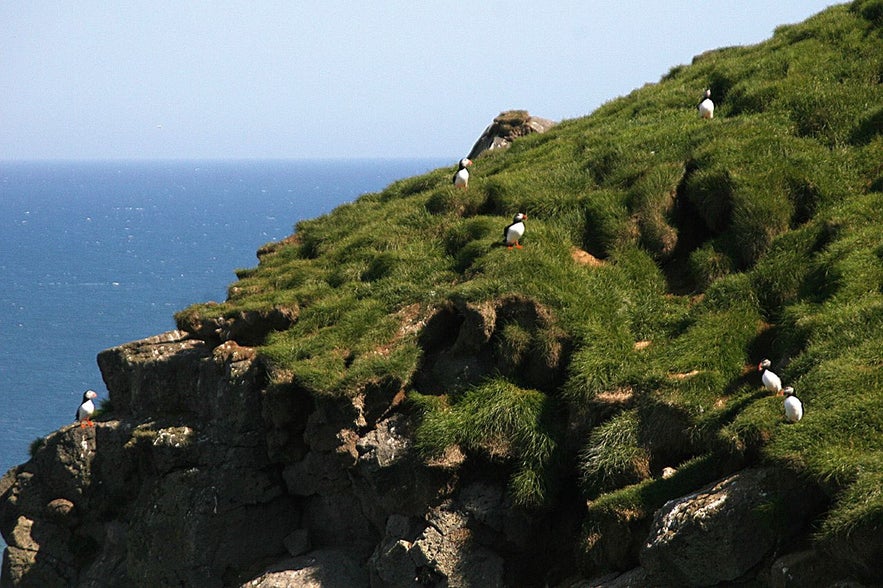 Photo from Wikimedia, Creative Commons, by Guillaume Baviere. No edits made.
Photo from Wikimedia, Creative Commons, by Guillaume Baviere. No edits made.
Further along the South Coast from Dyrholaey, between Skaftafell and Jokulsarlon, you can find Ingolfshofdi Cape and Nature Reserve. This hidden gem of a destination is surrounded by mighty cliffs and only accessible by crossing the dunes to its northwest; its sheltered, protected location makes it a thriving home for Iceland's puffins and other birds.
Like at Latrabjarg, you can expect to see the puffins nesting with a number of other species, such as kittiwakes and guillemots; because Ingolfshofdi has a rich vegetation, however, you can also expect a wealth of seafowl that includes many of the country's saltwater duck species.
This nook on the South Coast is often overlooked by travelers, so is the perfect place to come if you want to admire puffins without the crowds. A good way to take in the surroundings and, of course, get to meet the puffins is on a beautiful 1.5-hour hiking & puffin watching tour of Ingolfshofdi.
Ingolfshofdi has more appeal to it than just its nature. It is named after Ingólfur Arnarson, Iceland's first settler to come here by choice, as it is where he first wintered before settling in Reykjavik. It is also home to an old lighthouse, and some long-since deserted fishing huts, which, as unhomely as they appear, once kept the few residents of the area from the brink of starvation.
Puffin Watching on the Westman Islands
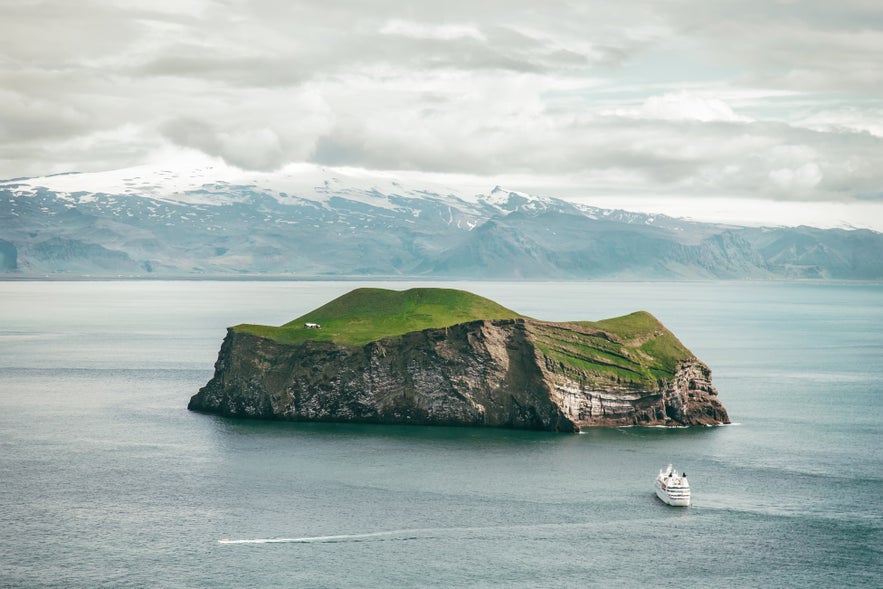 Photo by Ursula Drake
Photo by Ursula Drake
The Westman Islands, or Vestmannaeyjar, off the South Coast of Iceland, have the largest Atlantic Puffin colony in the world; thirty different species nest over the archipelago, but puffins are by far the most numerous. They nest on most of the islands, including the only one with a human population, Heimaey.
Reaching the Westman Islands throughout summer is easy; there are domestic flights from Reykjavik airport and regular ferries running from the southern town of Thorlakshofn. There are also some great accommodation options in Heimaey if you want to enjoy all that the islands have to offer.
As will be discussed below, once on Heimaey, it is possible to take a boat tour, which will introduce you to islands teeming with puffin life. If you wish to spend more of your time on land, however, you need not worry; there are colonies in the cliffs here too. A highly recommended way of seeing the puffins and more of what the islands have to offer is on a scenic 1-hour small island boat tour in the Westman Islands.
The puffins are so numerous in the Westman Islands that there is a tradition in the town where the children help pufflings who have wandered away from the cliffs, confused by the lights of the town, make it to the ocean. While cases like those mentioned above in downtown Reykjavík and the greenhouses in Selfoss are uncommon, finding a lost puffin in the Westman Islands is a regular occurrence. Indeed, nearly 5,000 of these pufflings were picked up and put back on track by the local children last season.
Spending a full day or two in the Westman Islands will provide you with more than just an excellent puffin-watching experience. These islands have a fascinating history of runaway slaves, murders of vengeance, pirate attacks, and, most recently, an eruption that threatened to engulf the main town. There are many museums and natural sites that you can spend hours exploring to learn about all of this colorful past.
Where is the Best Place to See Puffins by Boat?
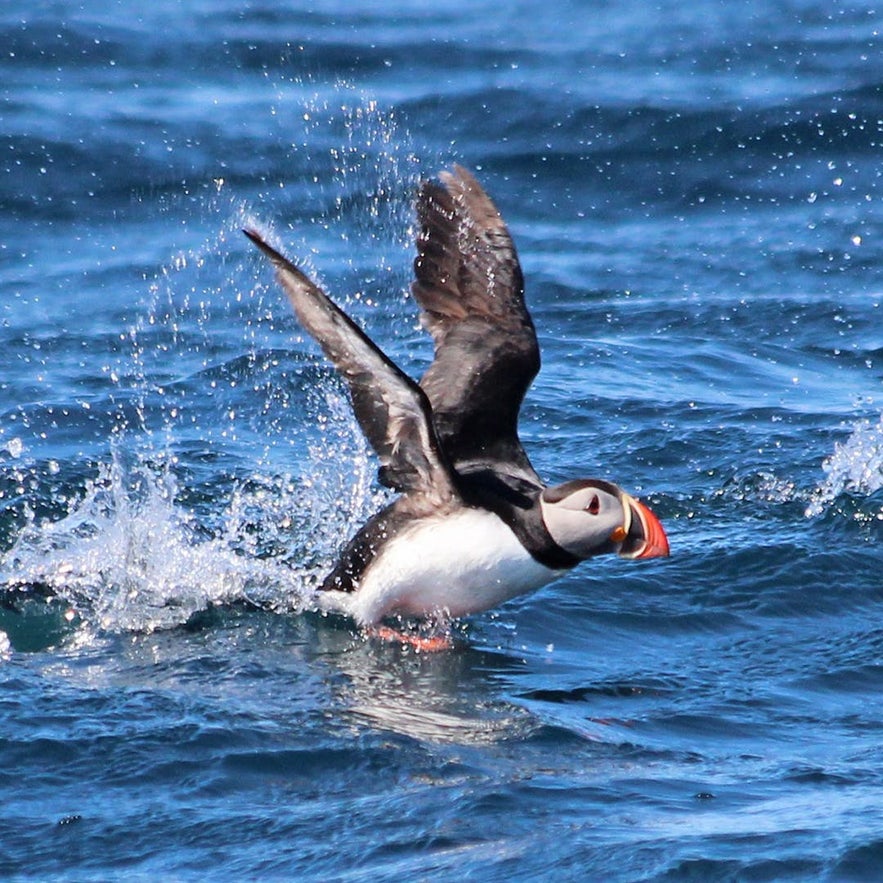
There are several advantages to taking a boat tour to see puffins rather than just walking up to them on the shore.
Firstly, it provides you with a great opportunity to get out on the water and admire sites such as the peninsulas around Faxafloi Bay from a unique perspective. Secondly, it allows you to watch puffins doing more than just guarding their burrows, such as bobbing in the water and diving for fish.
Finally, it also provides a better chance to see more of the animals that many hope to catch in Iceland, such as Humpback Whales (which also migrate to Iceland for the summer) and White Beaked Dolphins.
Puffin Watching from Reykjavik
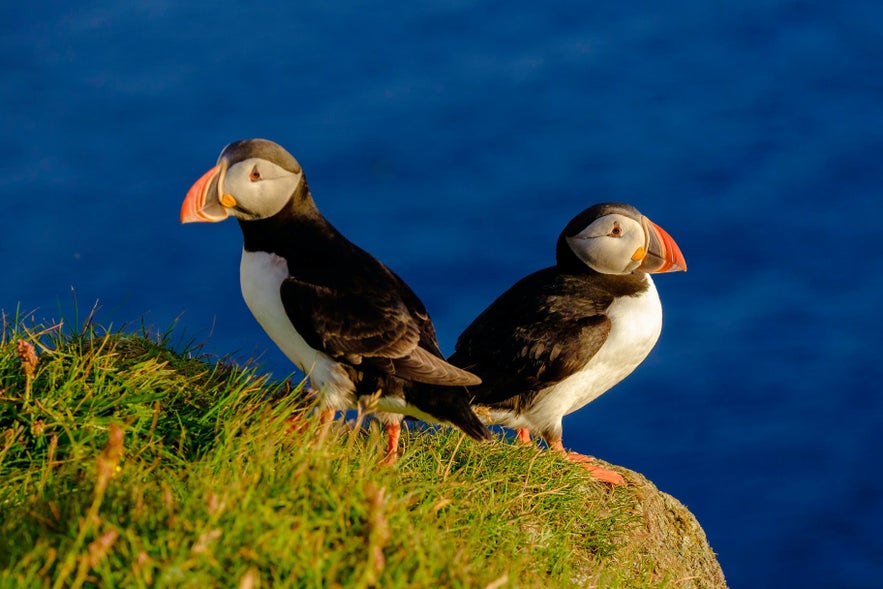 Photo from Up Close 2 Hour Whale & Puffin Watching Boat Tour with Transfer from Reykjavik
Photo from Up Close 2 Hour Whale & Puffin Watching Boat Tour with Transfer from Reykjavik
Taking a boat tour from Reykjavik's Old Harbor to see an island full of puffins seems too convenient to be true, but from May to August is more than a possibility. Two islands out in Faxafloi Bay, Akurey and Lundey, become the nesting grounds for thousands of these darling creatures every summer.
The most affordable and direct puffin tour will take you out in a boat that has been visiting these islands for seventeen years; it is small enough to get close to the islands safely and quietly, yet still has a sheltered area in case it the weather becomes problematic. There are binoculars on board so that you can get a perfect view of the nesting puffins.
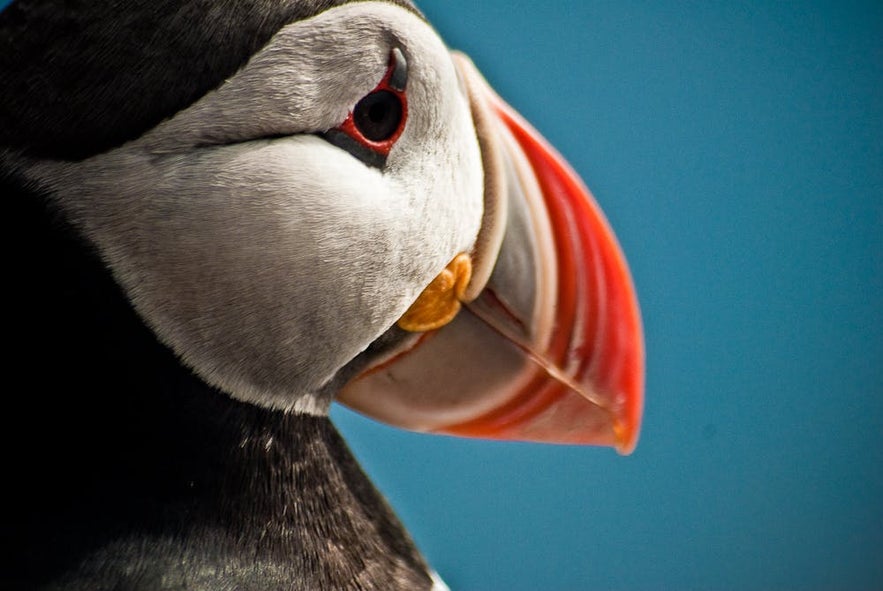
It is also possible, however, to combine your puffin-watching trip with whale-watching. Faxafloi Bay has a huge wealth of life, with white-beaked dolphins, harbor porpoises, minke whales, and humpbacks all frequently seen in the summer months; you also have a chance to see blue and fin whales, orcas, and even basking sharks.
Even if you overlook a puffin-watching segment and simply take a standard whale-watching tour, you are still more than likely to see puffins bobbing like corks in the ocean or fluttering overhead.
Although your operator will do their best not to disturb any animals, you may see a puffin take off in flight from the ocean, which is quite an entertaining sight. With a body built for agile swimming, not for flying, they have to clumsily and energetically "sprint" over the water, maniacally flapping their wings, to gain enough momentum to lift into the air.
Puffin Watching from North Iceland
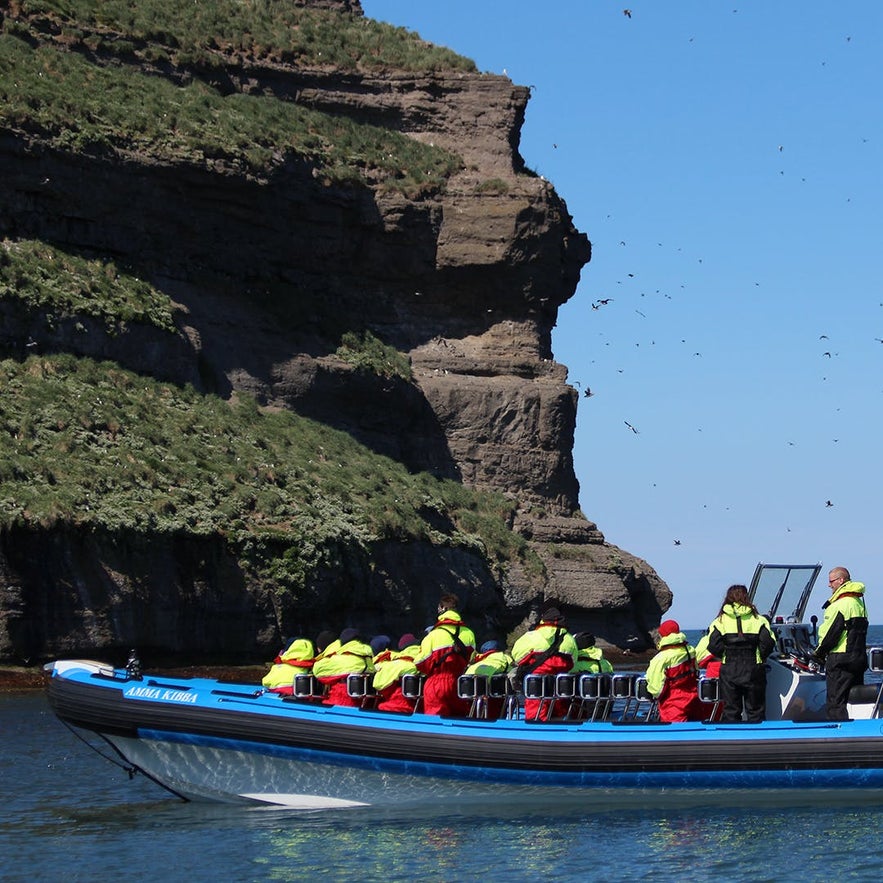
It is as easy to take a puffin-watching boat tour from the northern towns of Akureyri and Husavik as it is from Reykjavík; throughout the summer, multiple operators set out into Eyjafjordur and Skjalfandi, respectively, and return with incredible success rates.
While it is not so easy to book a trip to see puffins specifically, there are tours that combine the experience with whale-watching, considering the number of Humpback Whales in these waters and the area's tendency to invite even mightier creatures such as the Blue Whale, this is hardly a problem.
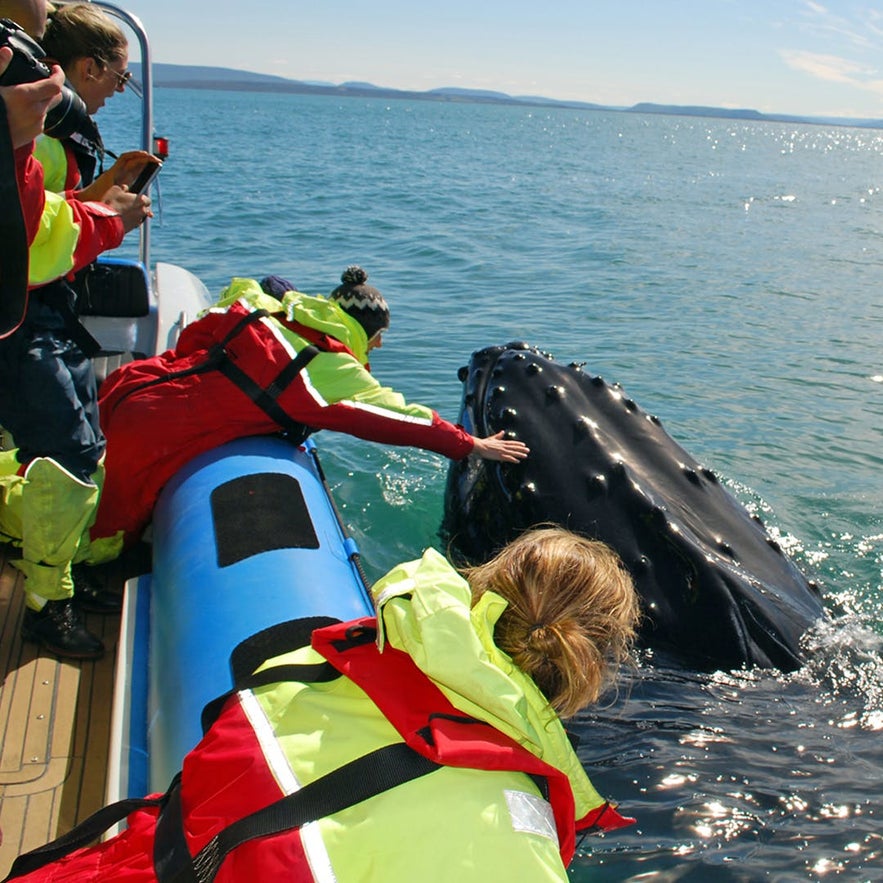
From Husavik, you can book a puffin and whale-watching tour on a RIB vessel to head out in hunt for diverse wildlife. Most of these tours will make a stop at Flatey Island, which is renowned for the sheer number of puffins that crowd it. From Akureyri, there is not quite the same center of puffin life, but there are whale-watching tours that focus on finding seabirds that will most likely result in you seeing many of these creatures in the seas and on the craggy coasts of Eyjafjordur.
- See also: Wildlife and Animals of Iceland
Puffin Watching from the Snaefellsnes Peninsula
Breidafjordur is the fjord that separates the Snaefellsnes Peninsula and the Westfjords. It has many little islands dotting it and fertile waters making it a perfect place for puffins to nest.
Unfortunately, there aren't any tours into Breidafjordur focused on locating and admiring its puffins. Even so, however, there are multiple boat trips you can take from the historic town of Stykkisholmur that will allow you to explore the fjord and see these birds both nesting and hunting in the waters.
For example, you could take a magical 2-hour seafood cruise, which combines a cruise with a freshly caught seafood dinner served as sushi, blending Icelandic ingredients and ingenuity with Japanese style. Though it is available throughout the year, taking this tour between May and September almost guarantees that you will see several islands with thriving puffin colonies.
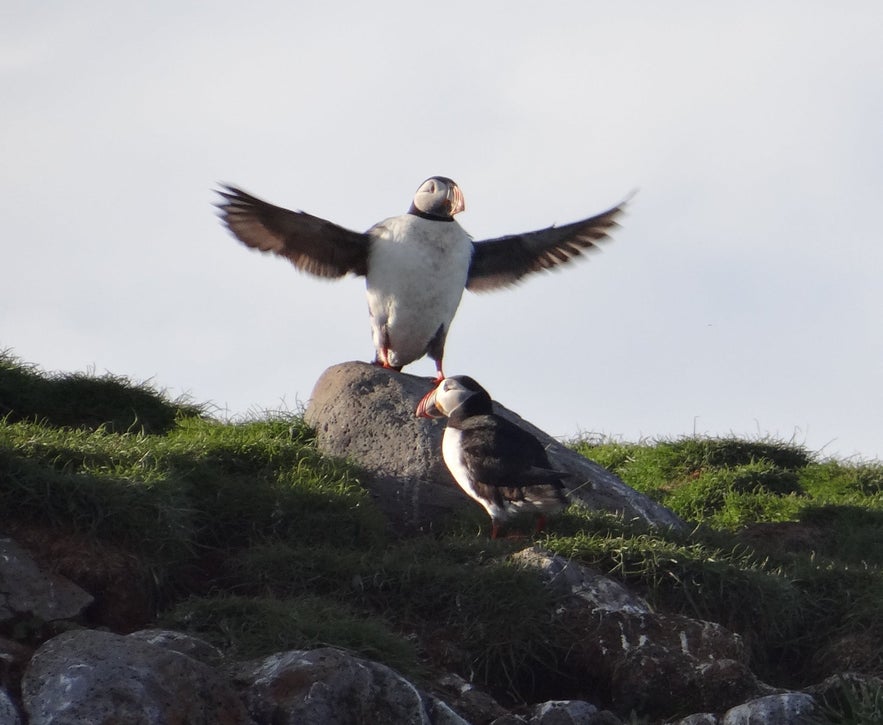
You could also jump onto this whale-watching tour in the final months of its season (it runs from November until June) for the same results. Whale watching in Breidafjordur is a higher risk, higher reward kind of experience, as compared to Reykjavik or Husavik. While great whales do not frequent their waters so reliably, the area is the best place in the country to find the elusive and magnificent orca.
If neither of these trips appeals to you or fits into your schedule, you also have a great chance of catching puffins simply by taking the Baldur ferry from Stykkisholmur to Brjanslaekur in the Westfjords or taking the ferry from the Westfjords back to Snaefellsnes. Those traveling around the country may have this in their plans anyway, as the ferry carries cars and is the quickest way to get between the two locations.
If you are utilizing a summer self-drive package that guides you around the entire Ring Road of Iceland, the Westfjords, and the Snaefellsnes Peninsula, such as these, which go over ten, thirteen, and fourteen days, this ferry trip is included in your itinerary and in the price.
Puffin Watching from Heimaey
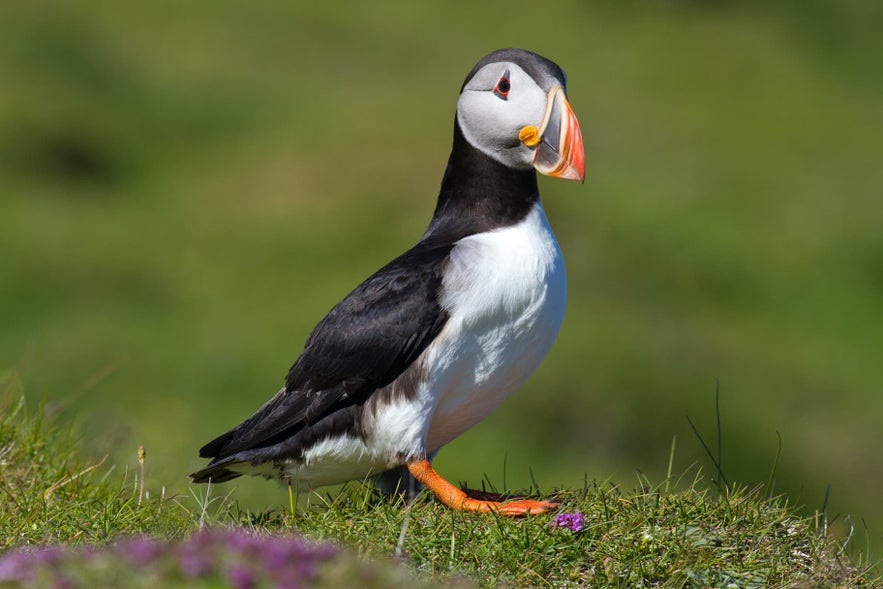 Photo from Puffin and Volcano Tour | Westman Islands
Photo from Puffin and Volcano Tour | Westman Islands
As discussed earlier, if you want to make the most of the largest Atlantic Puffin colony in the world, you can take boat tours from Heimaey in the Westman Islands to fully immerse yourself in an avian spectacle. These tours do not necessarily market themselves as puffin-watching excursions, as puffins are just an expected part of the experience.
Take, for example, this hour-long RIB tour that whisks you around the uninhabited islands of Vestmannaeyjar, taking you into five separate caves and to unusual features such as the famous Elephant Rock. Many of the little isles and rock crops you will pass (and, of course, linger at) will be packed with puffins, and throughout the tour, you will see many in the air and water.

These tours often have a lot more life than just the birds; seals are likely to be sharing the craggy coasts with them, and you have a good chance of seeing cetaceans too. It is the best place in Iceland to see the elusive and mighty Fin Whal, and the second-best place, after Breidafjordur, to see Killer Whales. It was, after all, home to Keiko, the long-suffering orca that played Free Willy, prior to his release back into the wild.
Puffin Watching on Papey Island
Just off the shore of East Iceland is another enormous puffin colony that can be reached by boat. Papey is a low-lying island, just two kilometers squared, that since 1948 has been deserted of full-time residents. Now, it is a paradise of birds (with puffins and guillemots being the main residents) and seals.
- See also: Seals and Seal Watching in Iceland
Reaching Papey Island required you to take a boat trip from the sleepy village of Djupivogur. Those who are taking the Ring road of Iceland will no doubt pass through here, as it is the first major settlement of the East Fjords if approaching from the South Coast.
If taking a self-drive tour around the whole country, this town will be visited on the day in which you head from the Jokulsarlon/Hofn area to Egilsstadir, the largest settlement of the east. This part of your journey is mainly comprised of sightseeing landscapes rather than specific features, so interrupting it with a boat trip to Papey can make for a great way to break up the day.
Puffin Watching on Grimsey Island
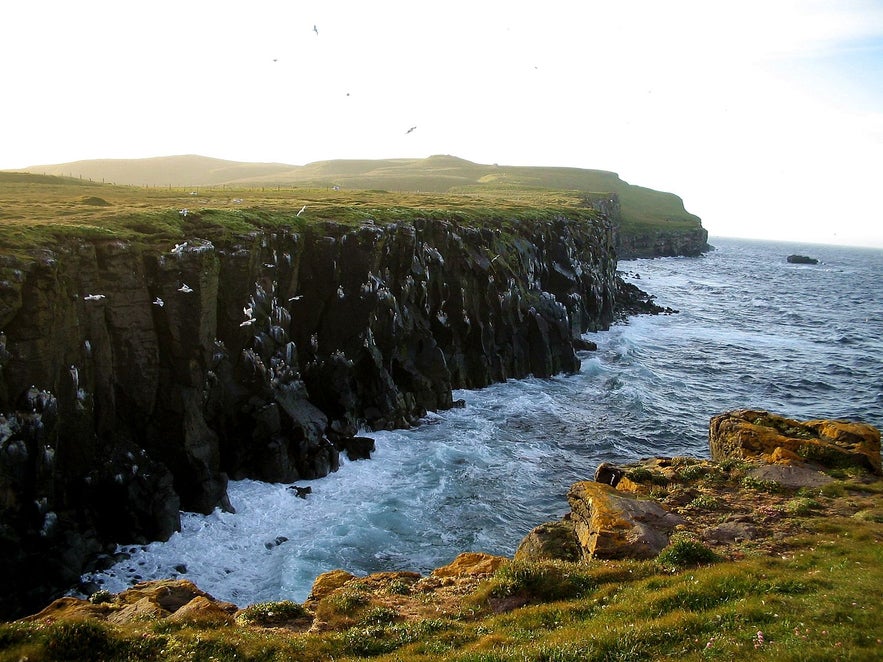
The final place in Iceland where you are guaranteed to see a great colony of Iceland's favorite animal is Grimsey Island, the only Icelandic territory north of the Arctic Circle. Most people visiting come only for the novelty of having their passport stamped with the proof they entered a polar region and are surprised to find the wealth of birdlife present.
Something to be aware of if planning a visit to Grimsey is that, because of how far north it is, the puffins tend to migrate a little earlier than in much of the rest of the country. While in September, there will certainly still be a few puffins at, say, Vestmannaeyjar, they are likely to have already left Grimsey by mid-August.
Grimsey Island is easy to reach for any travelers to North Iceland; ferries run throughout the summer from Akureyri, and flights from its domestic airport go on throughout the year.
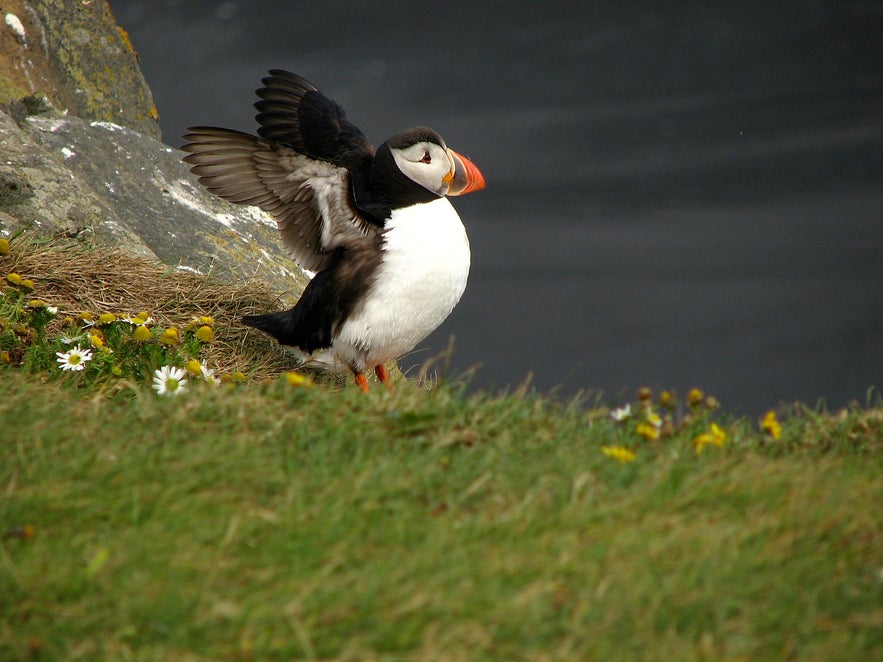 Photo from Wikimedia, Creative Commons, by CGP Grey. No edits made.
Photo from Wikimedia, Creative Commons, by CGP Grey. No edits made.
- See also: Top 5 Islands in Iceland
To conclude, Iceland is the puffin-watching capital of the world. No matter where you are based in the country, with the obvious exception of the Highlands, a puffin colony will be easy to reach and return from within a day. If traveling in summer, then you should make every effort to get to at least one of them; you will not regret it.
Seeing these creatures is a blessing, no matter where you are in the world. The fact, however, that in Iceland, you can get so close to them, that they nest in such numbers, and that their nesting grounds are in such beautiful locations, puffin-watching over here has a special kind of magic.
That concludes our guide to meeting puffins in Iceland. Did we leave any questions unanswered? Do you have any stories of encountering these birds in Iceland? Let us know in the comments below!
Andere interessante artikelen

Waar te overnachten in IJsland
Ontdek de beste verblijfplaatsen in IJsland in onze gedetailleerde reisgids. Ben je op zoek naar hotels en accommodatie in IJsland? Benieuwd waar je in IJsland kunt verblijven om het noorderlicht of...Lees verder
Autorijden in IJsland: De Ultieme Gids voor Road Trips
Leer alles wat je wilt weten over rijden in IJsland. Kom erachter waarom het 's zomers makkelijk is om door IJsland te rijden, en 's winters lastiger. Leer hoe je een auto kunt huren voor je rondrei...Lees verderKaarten van IJsland
Vind de kaart van IJsland die jij nodig hebt met deze 20 kaarten van alle IJslandse bezienswaardigheden. We hebben alle essentiële kaarten gemaakt voor de onmisbare bezienswaardigheden op Google Map...Lees verder

Download het grootste reisagentschap van IJsland op je telefoon en beheer je hele reis op één plek
Scan deze QR-code met de camera van je telefoon en klik op de link om het grootste reisagentschap van IJsland in je zak te stoppen. Voeg je telefoonnummer of e-mailadres toe om een sms of e-mail te ontvangen met de downloadlink.
